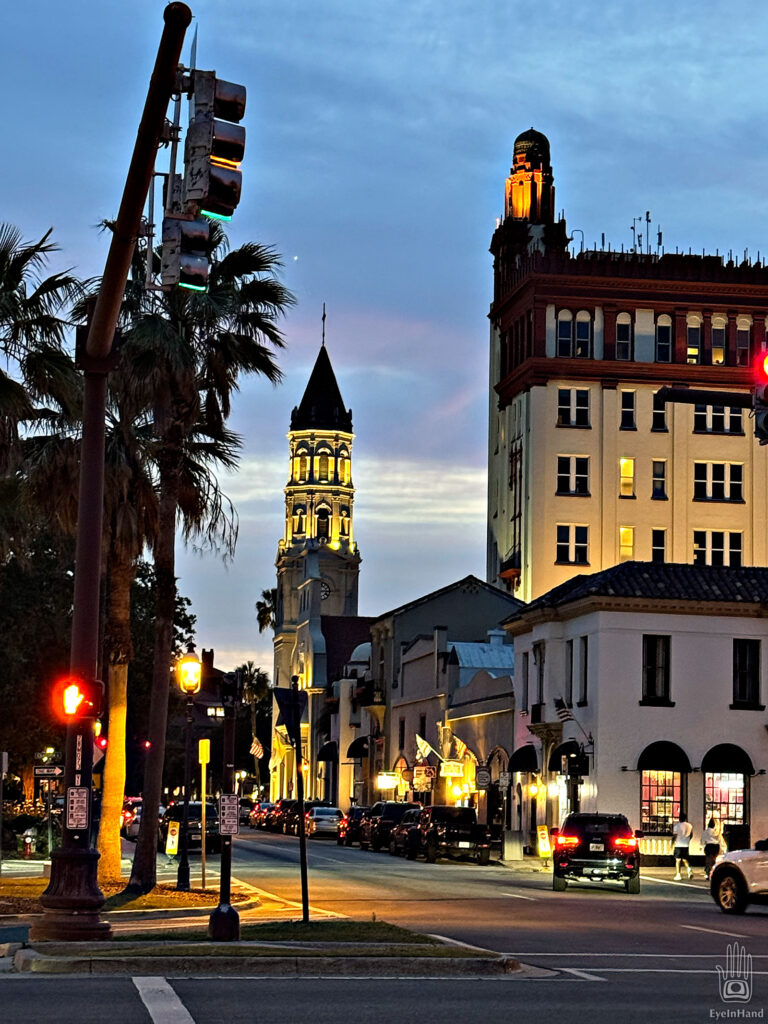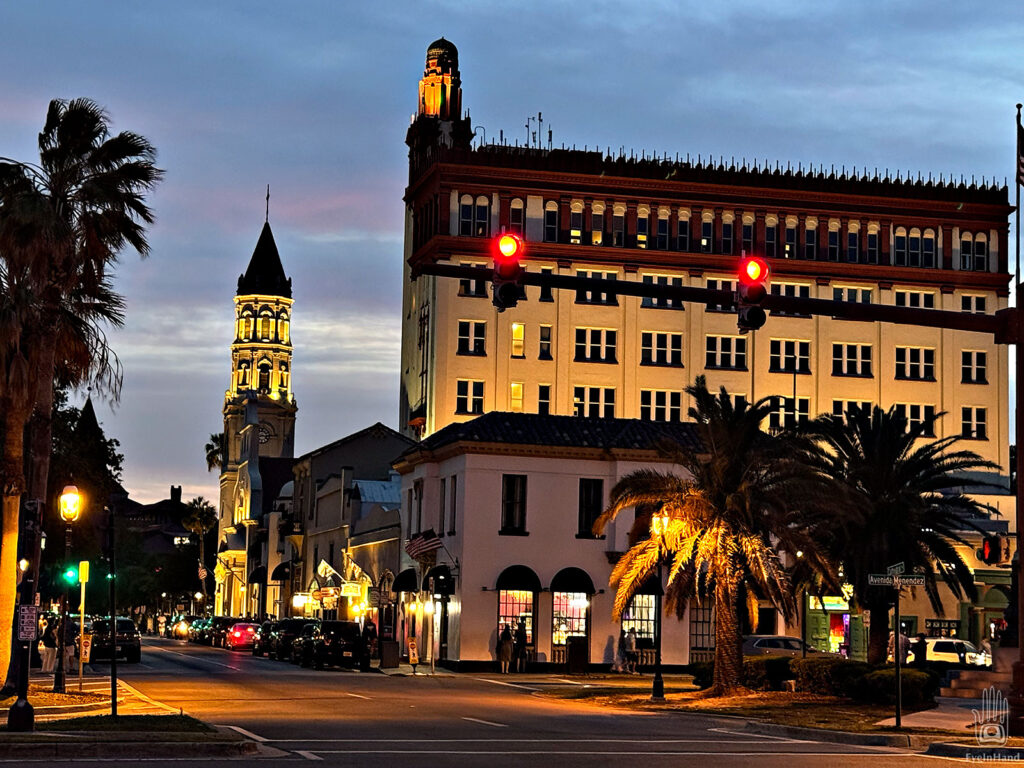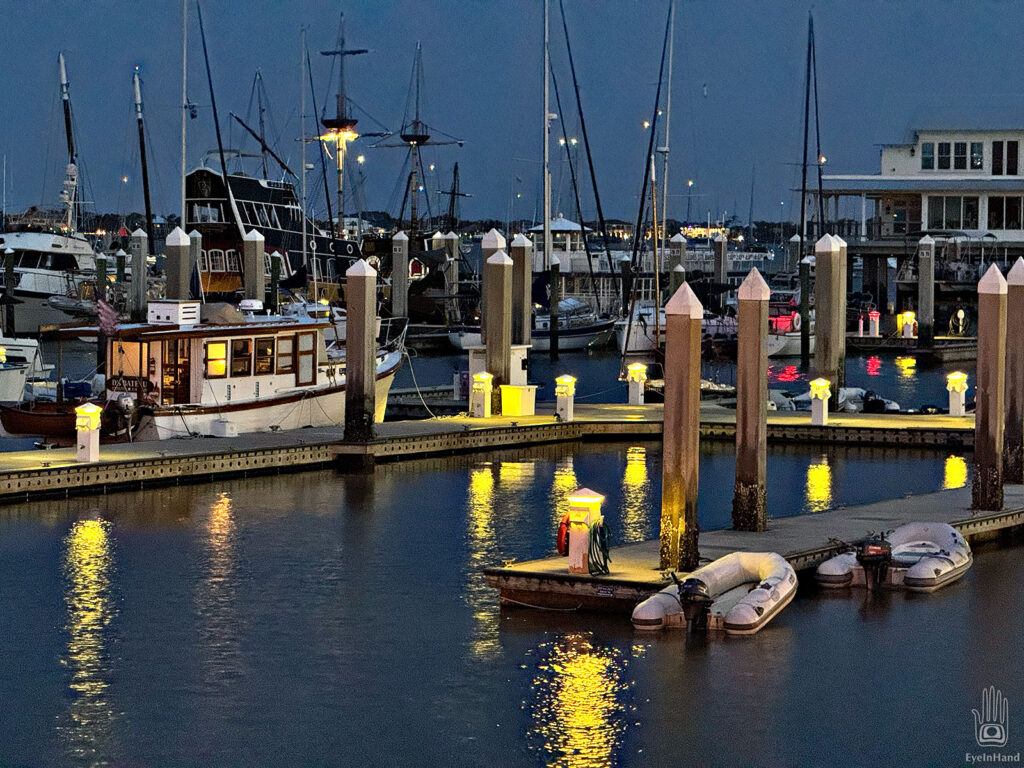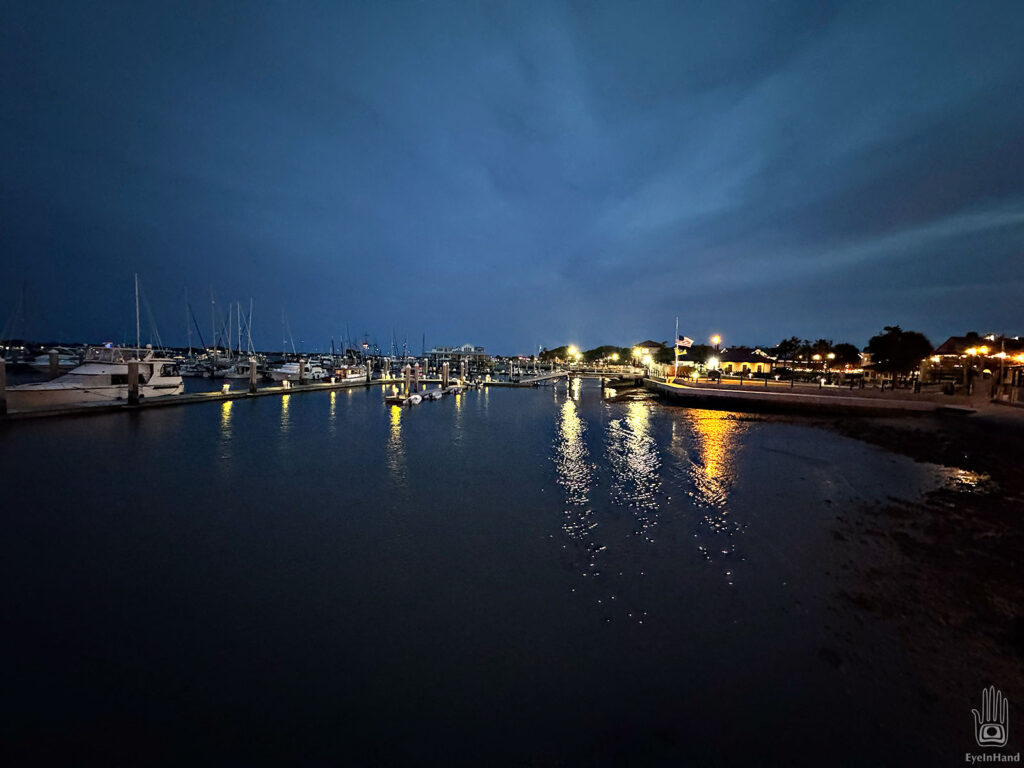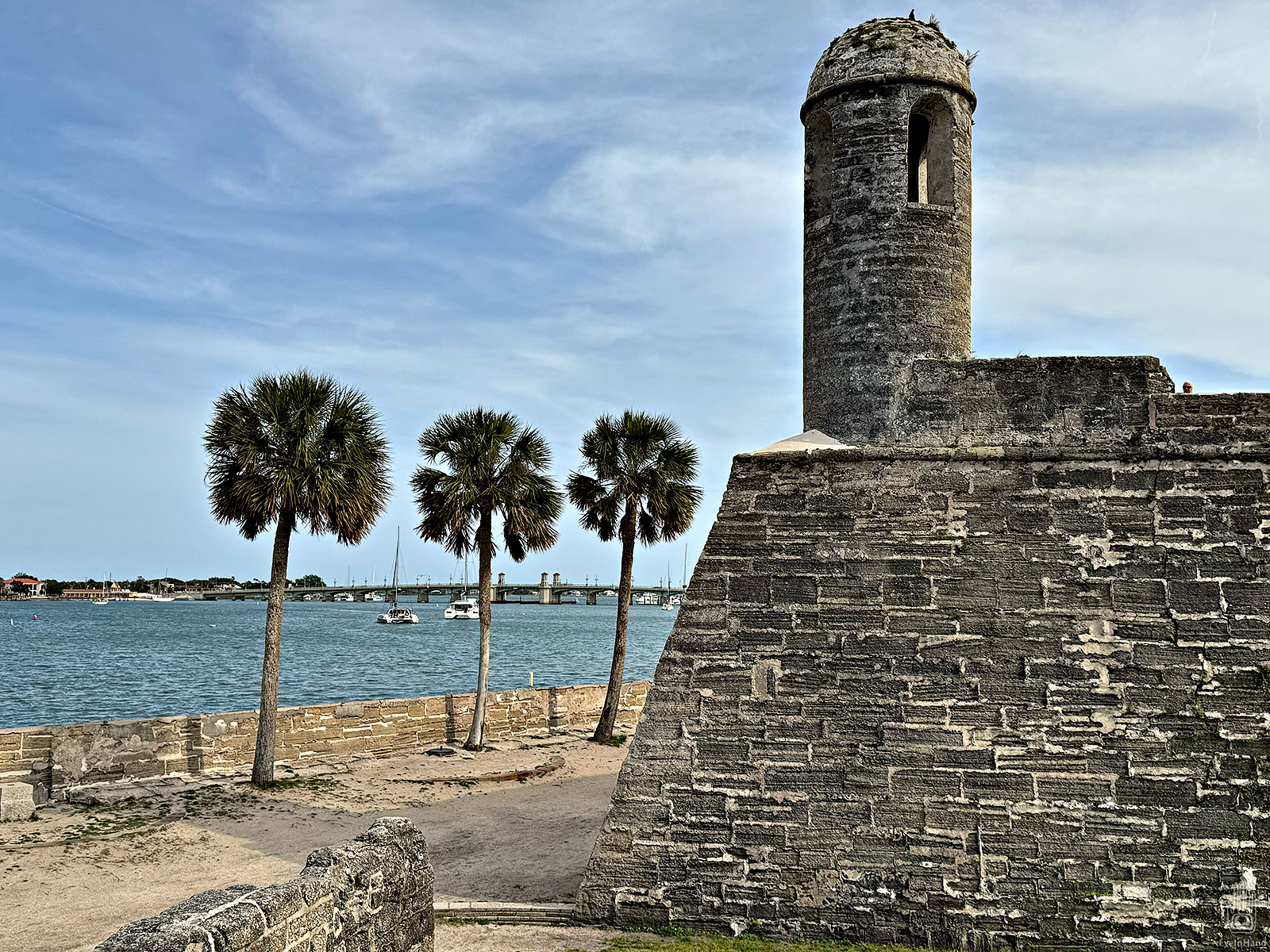Day 3 – Dipping our toes in Florida’s “First Coast”
Links to Chapters in the Series
It’s only a couple of hours from Marineland to the oldest city in the US – St. Augustine – where I will find, finally, a decent hat. A short, easy day. Doug makes another fine breakfast, we wash up, anchor up, and head north.

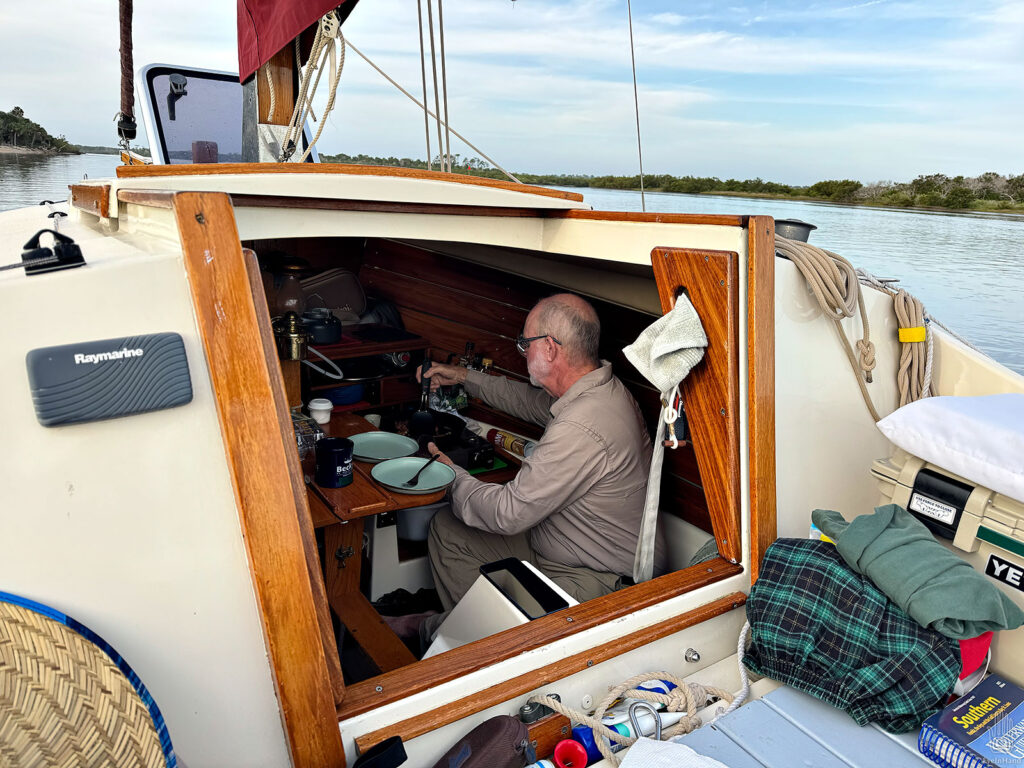
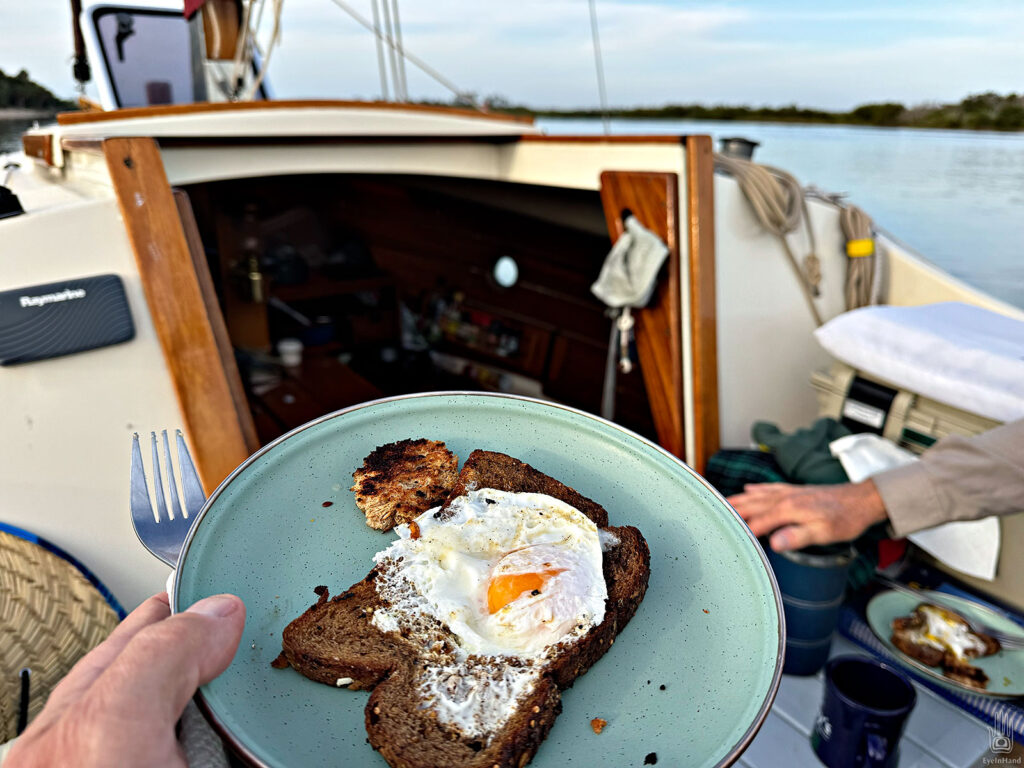
Soon the linear dredged canal relaxes into winding creeks and marshes, the Matanzas River proper. Drawbridges spring from clusters of houses that appear along the shore more frequently. We enter a patchwork quilt of history loosely stitched together – ruins of colonial era Spanish fortifications, new McMansions next to an old Victorian from 1862 at the start of the Civil War, rustic fish camps from the 1900s, wilderness as it was before Europeans arrived. Every mile under the keel takes us forward or back decades, but the trend is definitely backward in time until we reach St. Augustine.
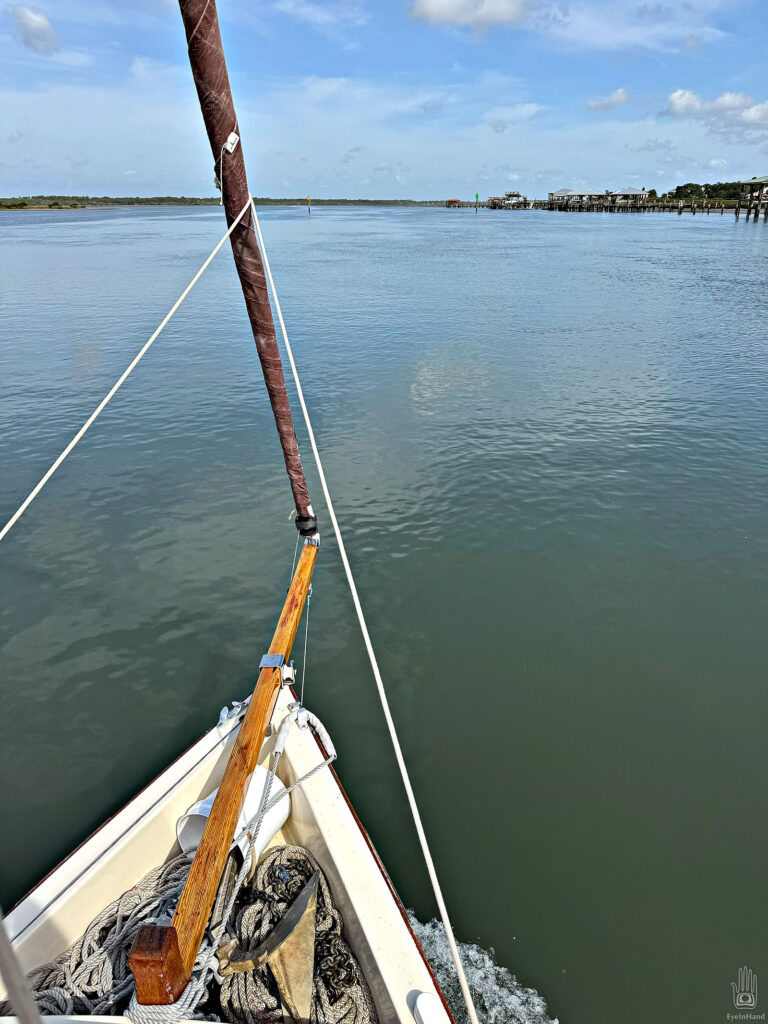
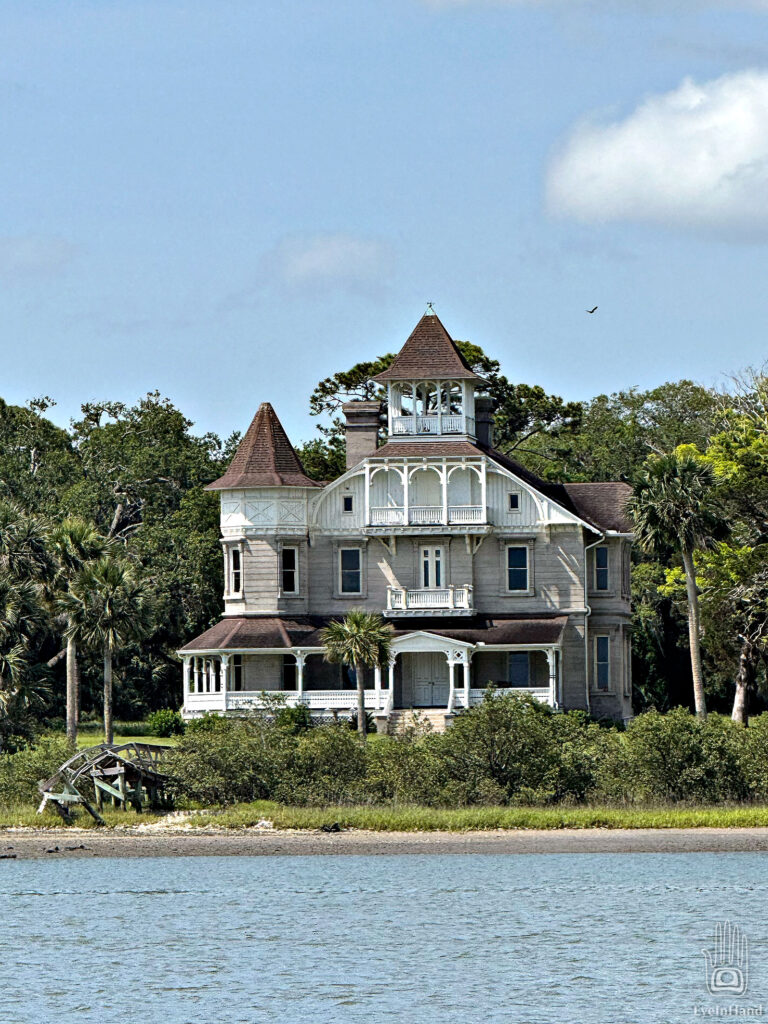
We arrive at the marina in the heart of the old city in time for lunch, but have chores to do first. We need to top off fuel, replenish ice in the cooler, and take the first shower in days before we can mingle in polite company.
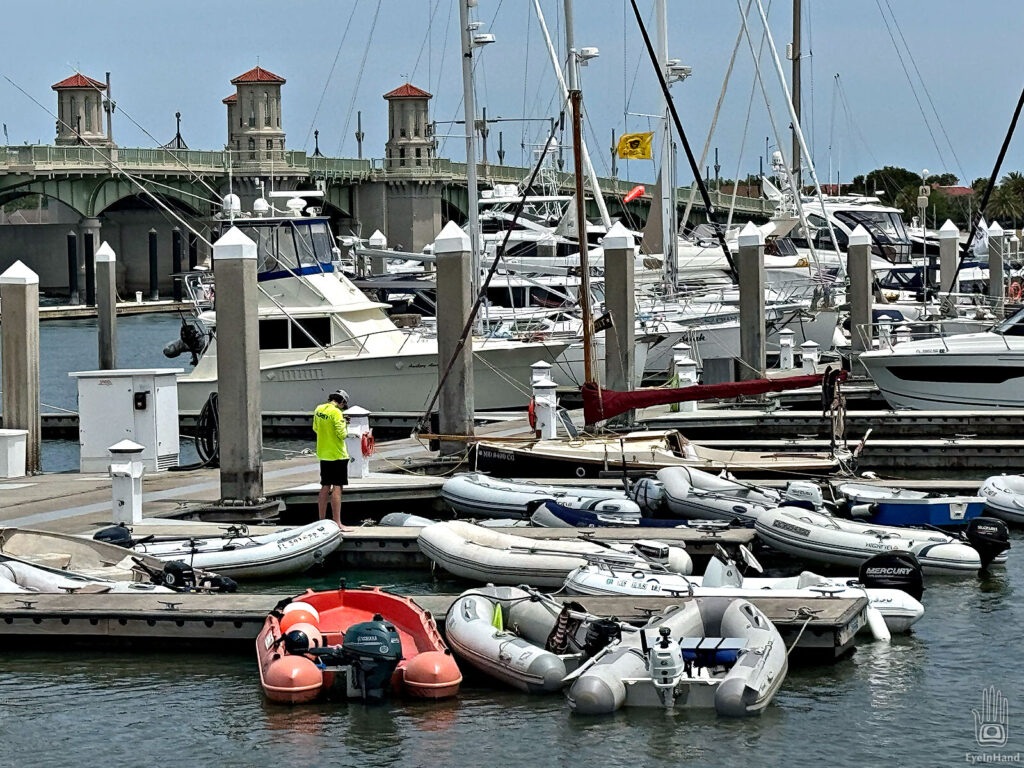
Topping up the diesel tank, we’re again reminded of how small we are. The pumps are gauged for quickly dumping a thousand gallons into mega-yachts, for owners with no patience. Tidings, on the other hand, sips fuel like aged scotch, using only a couple of gallons every couple of days. The shore crew has the main valve choked down to keep from overflowing our tiny fuel tank. Takes several tries for them to open it just a crack so fuel flows, and the tank is filled in seconds.

Chores done, cleaned up and presentable, we take a stroll through town. The layers of history are thick here. Colonial, Civil War, World Wars, Victorian, the Roaring Twenties, Spanish, English, French, Native American . . . It’s all here. All tumbled together on a few small blocks.
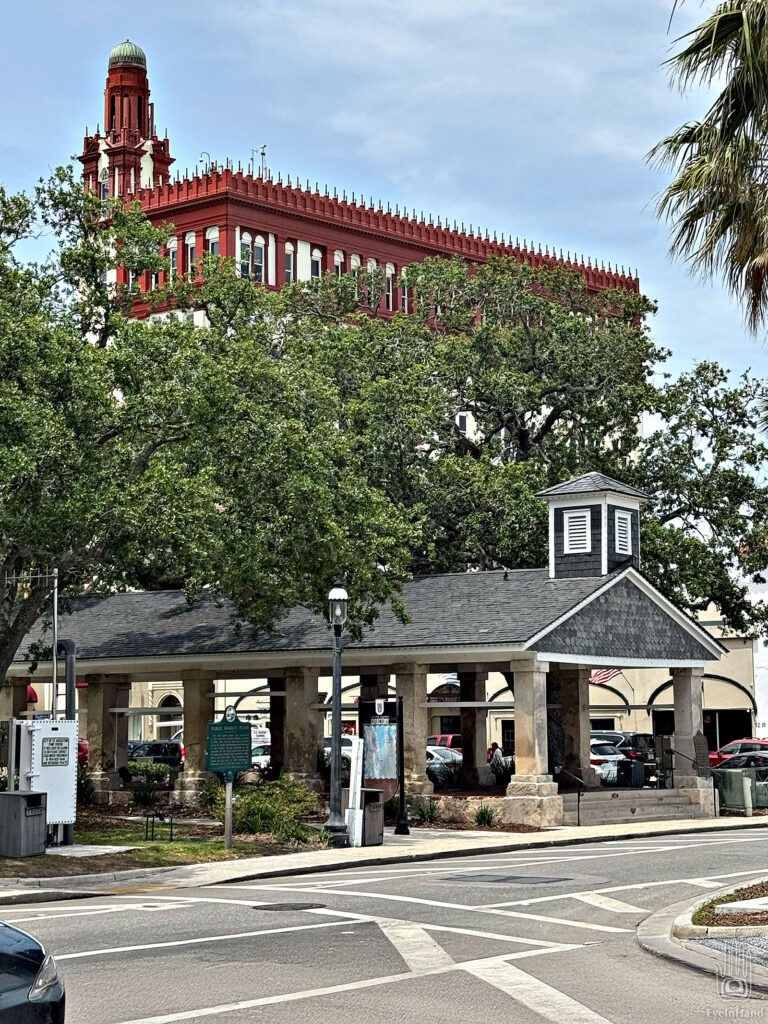
People make history complicated. The first thing you see at the heart of the waterfront, front and center, the very keystone of the city, is the old slave market. Variously used as a meat market, bankruptcy auction, produce market, and a stage for public whippings. The largest slave market in the South was north of here at Charleston; but every coastal town in the South had one of its own, conveniently located near the docks. It looks pleasant, like a picnic pavilion in the park. A 300 year old picnic pavilion. So yes, complicated history.
I suppose this is where we have to talk about Henry Flagler.
The most famous man you’ve never heard of, Henry Flagler made Florida what it is today. All of eastern Florida, from St. Augustine to Miami/Palm Beach to the Keys – all were founded or funded by Henry Flagler.
Along with John D. Rockefeller, Flagler was one of the founders of Standard Oil. It was through Flagler’s rapacious and now illegal business practices that Standard Oil metasticized into a crushing global monopoly.
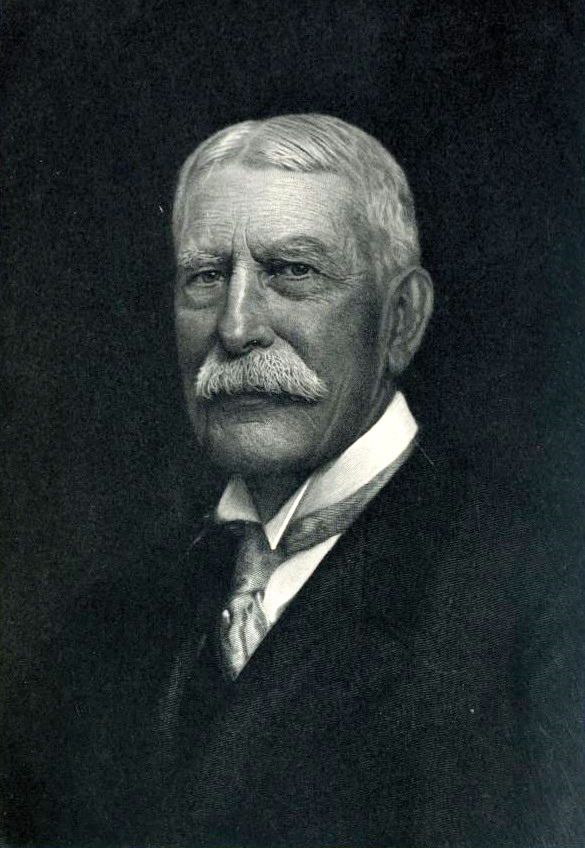
At its peak, Standard Oil controlled 90% of the world capacity for refining oil, with tentacles reaching into everything from railroads to shipping to pipelines to paint to home heating and even chewing gum. It was this monopoly, and the methods of achieving it, that precipitated drastic legal action at the federal level. Like the Dutch and British East India Companies of an earlier era, it had become more powerful than a nation state, and undermined any efforts to govern it. The Sherman Antitrust Act forced Standard Oil to break up into many smaller companies, and a mechanism was created to prevent any business from becoming more powerful than the republic.
After the forced break up, Rockefeller and Flagler went separate ways. Rockefeller went to the Northeast, and Flagler went South. Rumor has it they came out pretty well. You can’t go far in either New York or Florida without seeing one of their names on public display. Certainly that’s true of Flagler in Florida. We walked on Flagler Streets in Daytona, sailed through Flagler County and past Flagler Beach on the way here, following the old Flagler Railroad that spanned all 500 miles of the Atlantic Coast of Florida, from Jacksonville to Key West. Most of the cities along that route, including Miami and Palm Beach, exist because of Flagler and his railroad. He essentially created the modern state of Florida, which only became an official state 15 years before the Civil War, just as Flagler was entering the oil business.
Flagler first came to Jacksonville for the health benefits of a warmer climate, a doctor’s recommendation for his consumptive first wife. She soon died, but he married her nurse, and the newlyweds moved to St. Augustine. Finding the place wanting, Flagler proceeded to invest heavily to improve it to suit a man of his means, and also promote it for profit. For this he built the first leg of his new railroad from Jacksonville, to make the work of both tasks easier.
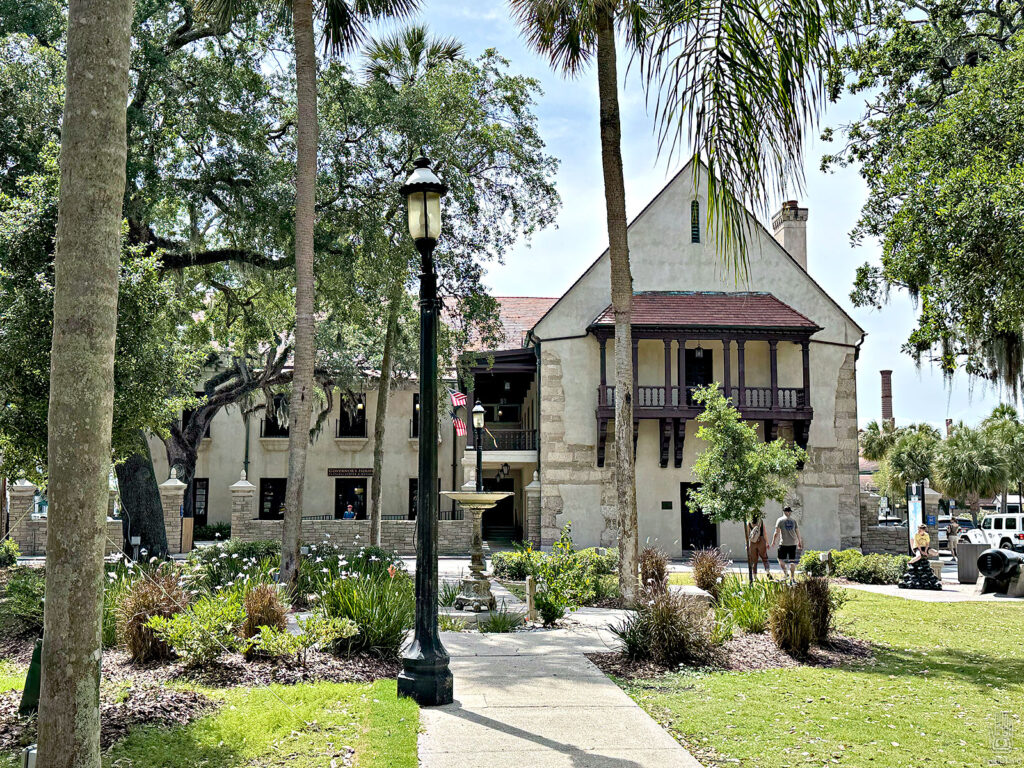
We pass through the slave auction pavilion into the park, pass the Governor’s House, seat of government since the early 1700s when Florida was still part of Spain, and find ourselves in front of Flagler College, in a town square full of monumental Flaglers.
The first thing Flagler did in St. Augustine was build an opulent 540 room Gilded Age hotel, The Ponce de Leon, now Flagler College, with an interior designed and furnished by Tiffany.
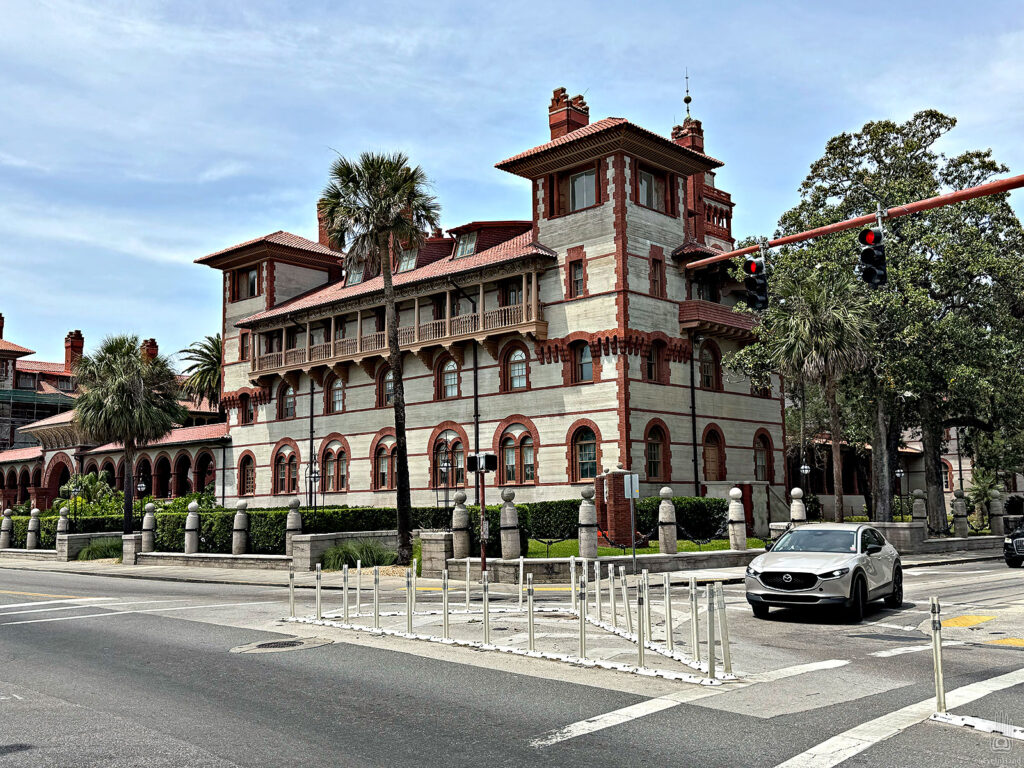
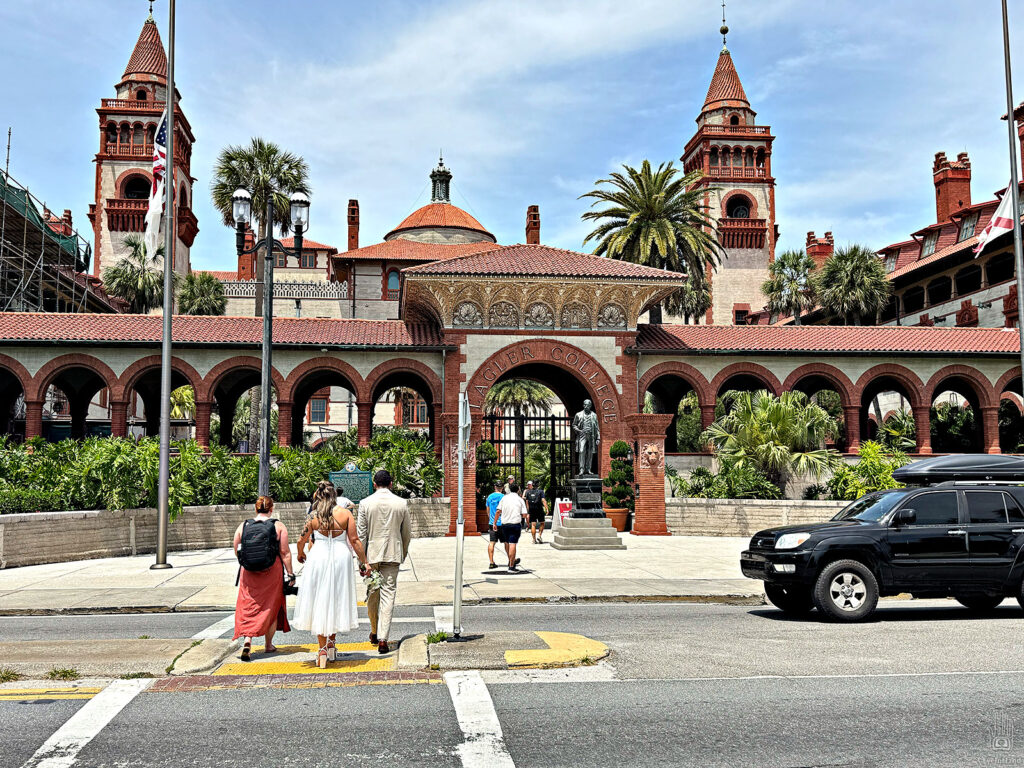
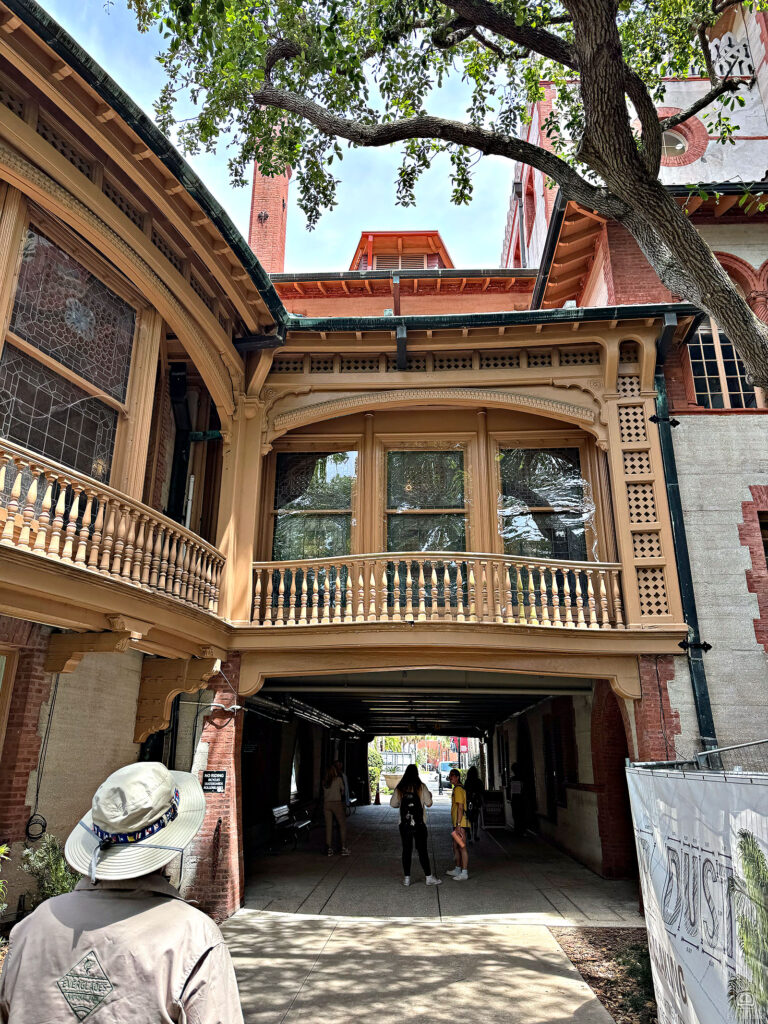
The architects were the same used for the New York Public Library, and was one of the first buildings wired for electricity. It ran on DC dynamos installed by Flagler’s friend, Thomas Edison. Flagler had to hire staff to turn the lights off and on for his guests, who were too afraid to flip the switches themselves.
The hotel was an instant success, enticing Jazz Age swells from up north to come south for exotic balls and bacchanals. To fill out the guest list, he added an artist colony. Notable guests included:
Presidents Grover Cleveland, Franklin and Teddy Roosevelt, Warren G. Harding, John F. Kennedy and Lyndon Johnson
Mark Twain
Somerset Maugham
Babe Ruth
Robert Frost
Ernest Hemingway
John Dos Passos
Zora Neale Hurston
Marjorie Kinnan Rawlings
It remained open through Prohibition, the Great Depression and two world wars until 1967. It was then converted to the private Flagler College, which preserved most of it, including the Tiffany windows.

Across the street is the Santa Monica Hotel, which he purchased, and next to that the Hotel Alcazar, which Flagler built to handle the soon overflowing crowds from The Ponce. The Alcazar is now the Lightner Museum.
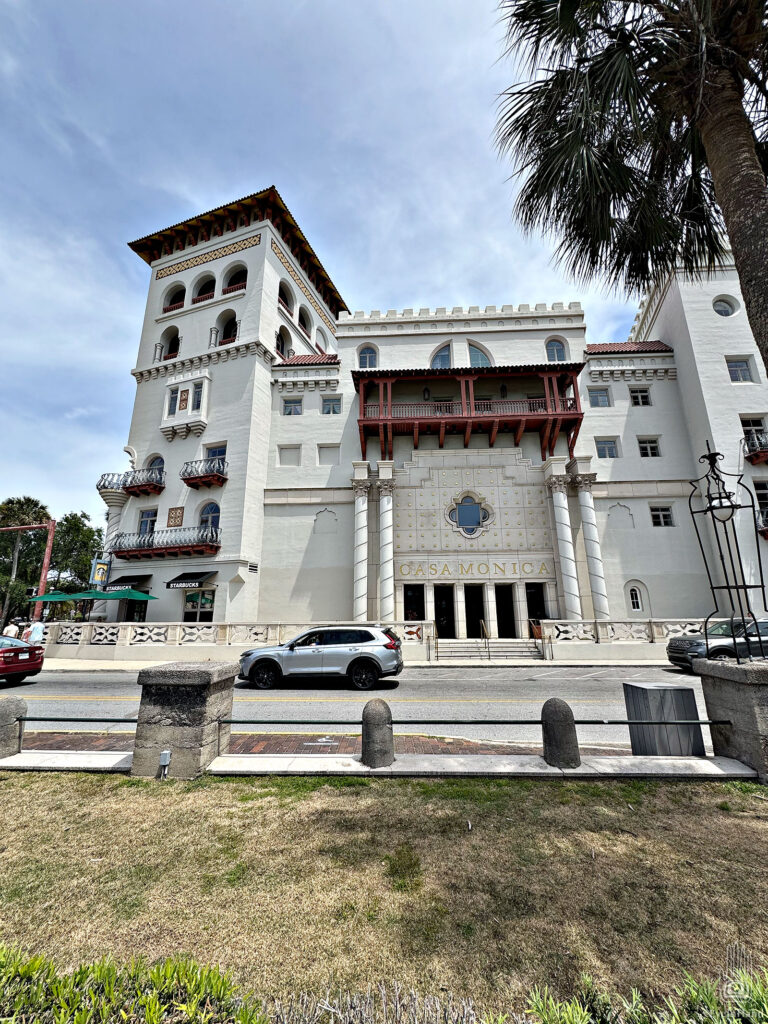
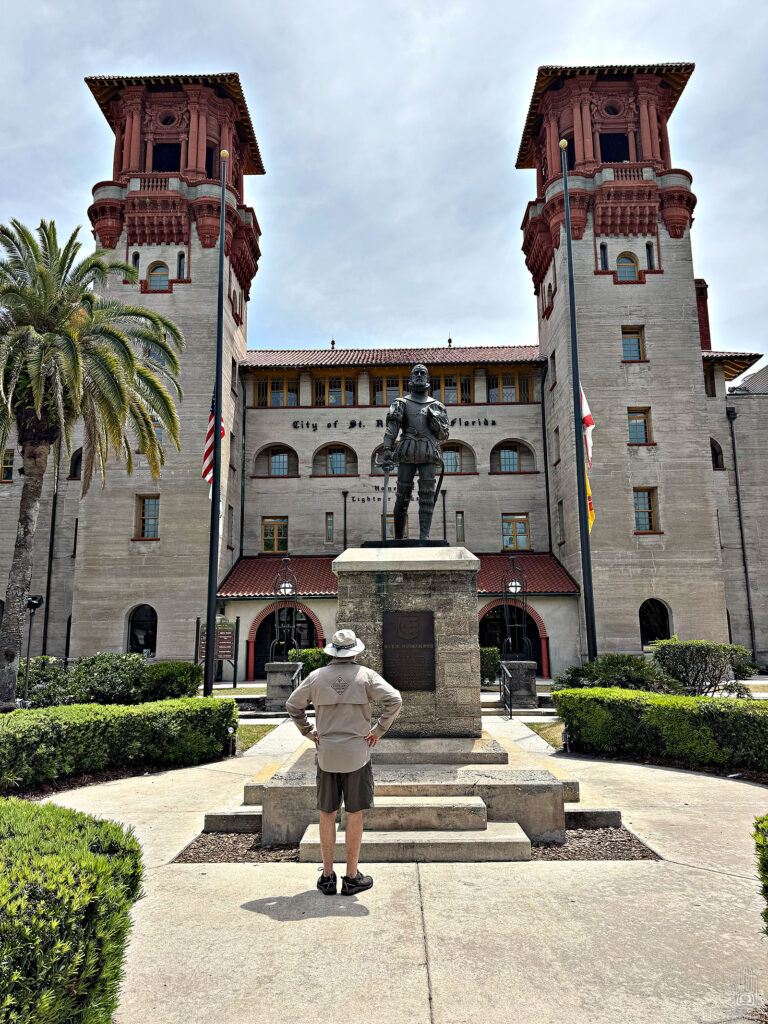

A little further down the street is the Villa Zorayda, home of Flagler’s business partner, Franklin Smith. It’s an odd, overly ornate, moorish revival-ish, Gilded Age mansion. Too much ornamentation for its size, like Smith found a way to use every trope of Moorish architecture on a single, domestic building.
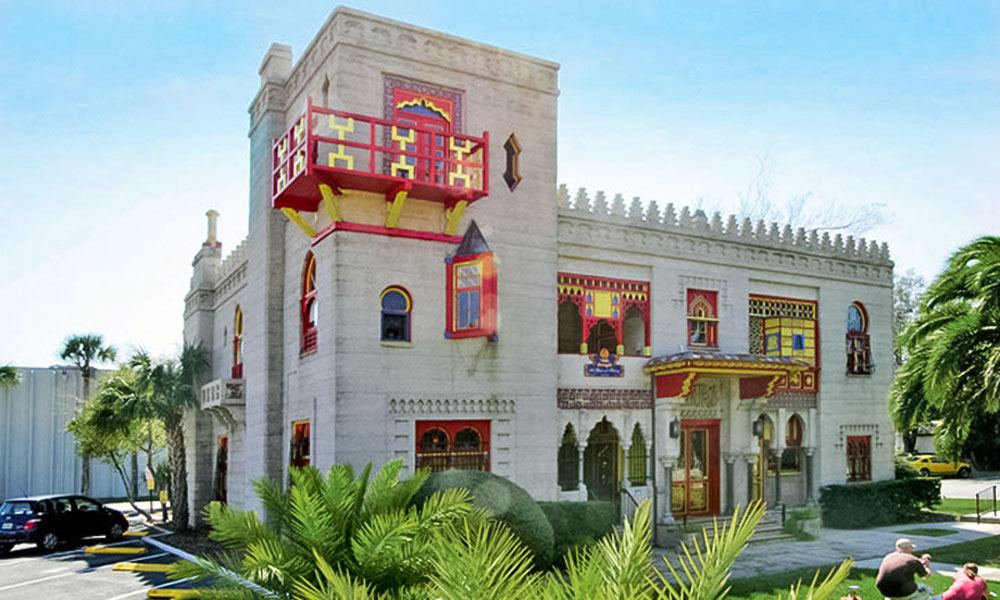
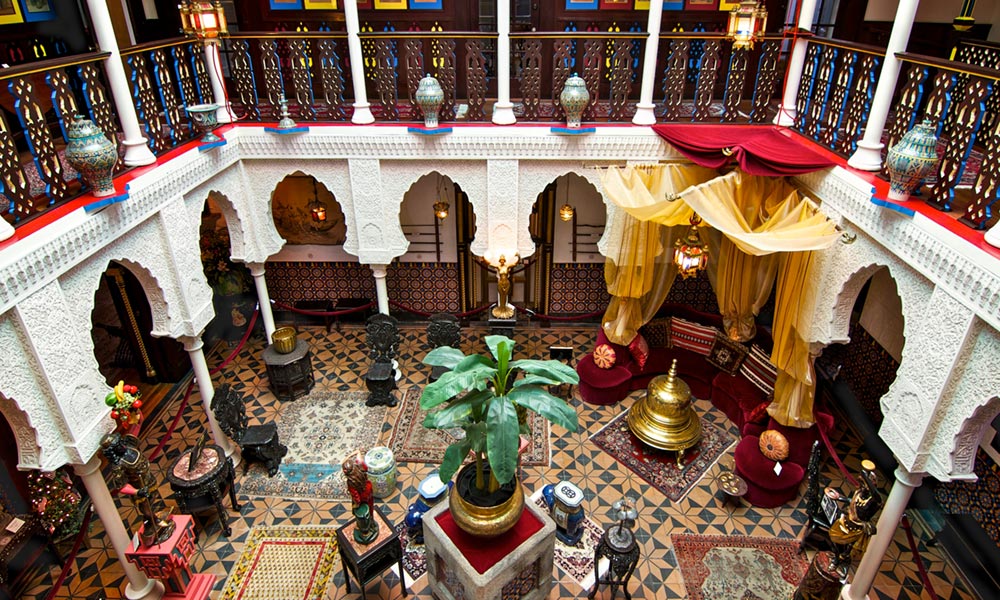
It’s also made of poured concrete, the first in Florida, using a process Smith invented. Rot proof, bug proof, and storm proof, the construction method was adopted by Flagler for all his hotels, including the Ponce de Leon, making it the first hotel built of poured concrete, and thereafter so went most of Florida. To this day, you still find concrete bunker style bungalows in Florida that used the same method. At different times the Villa Zorayda was a personal mansion, a casino, a speak easy and private club during prohibition, and now a museum. Also all very Florida.
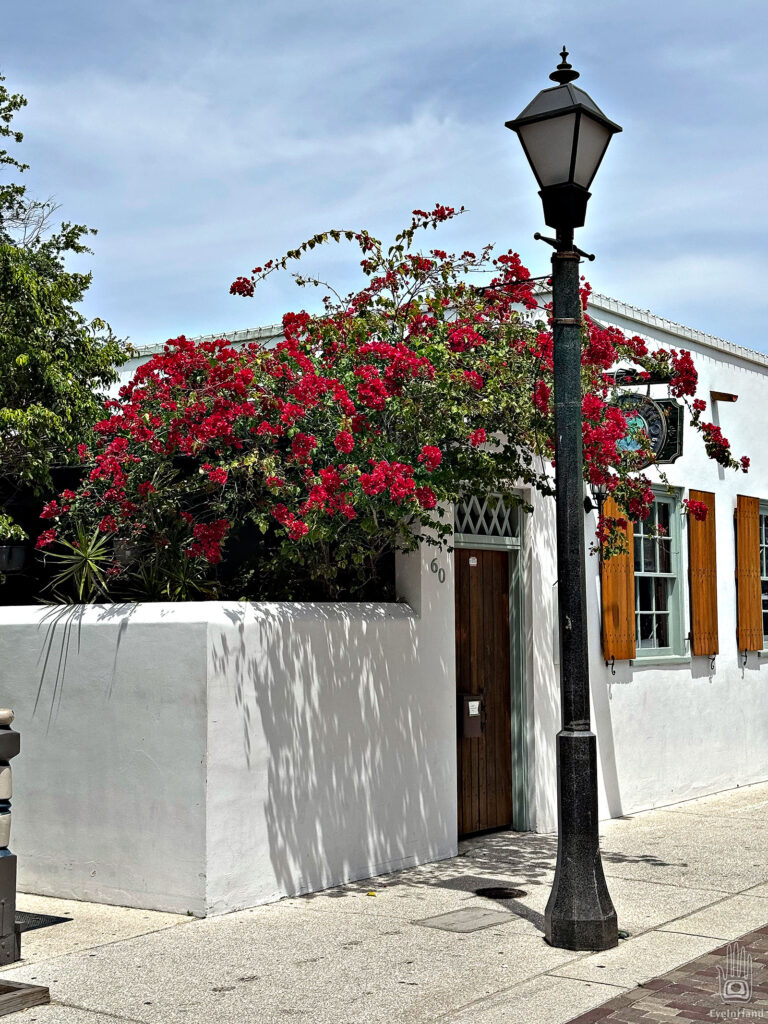
Building all these things took a lot of labor, especially Flagler’s railroads. Labor was scarce in swampland, and he wanted it cheap. Slaves were even harder to find by the 1880s, so Flagler rented them from the state. He used convicts leased from Florida prisons to build his railroads to Key West, to build bridges, to clear land for his hotels as far away as Miami, etc.. Grueling manual labor in snake, alligator, and malaria infested tropical swamps.
His employment agents were prosecuted for holding workers in debt peonage and slavery. By then, Flagler also owned newspapers in the jurisdictions where these crimes were charged. Public opinion was shaped by his media and his philanthropic largesse, and local judges dismissed all charges against Flagler’s staff, companies, and reputation. So, also complicated; also all very Florida.
After a short stroll, not finding a new phone case for the new phone, Doug decided to take a relaxing carriage tour. I wandered down streets and alleys, through shops and neighborhoods, out to the old fort and back.
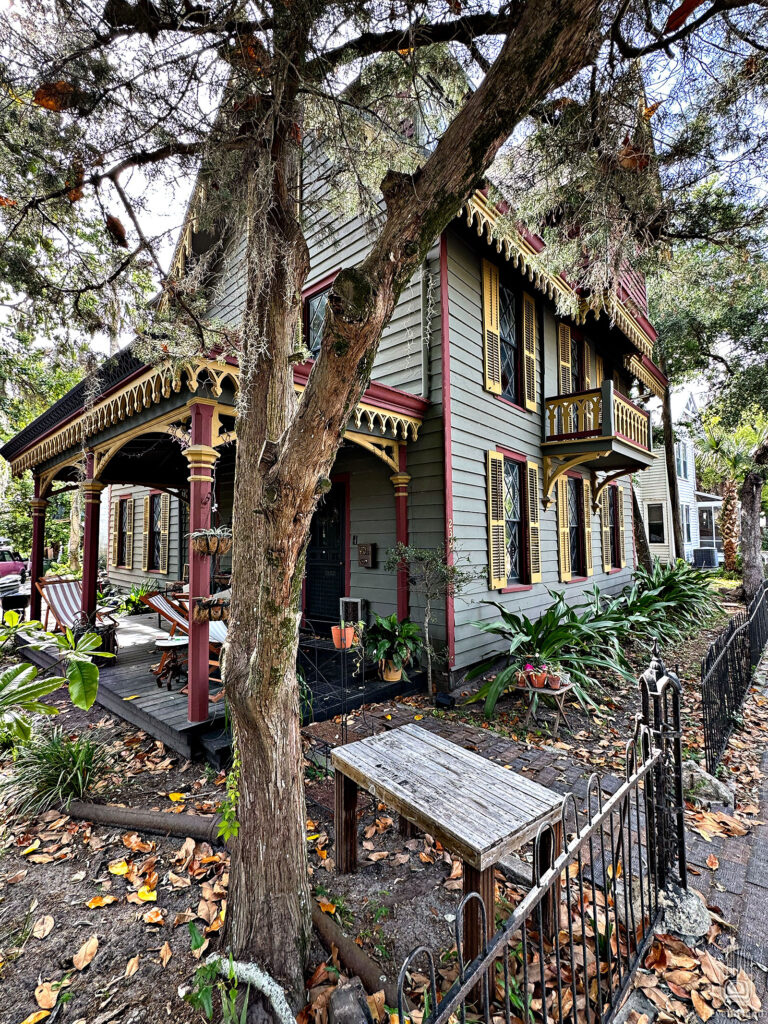
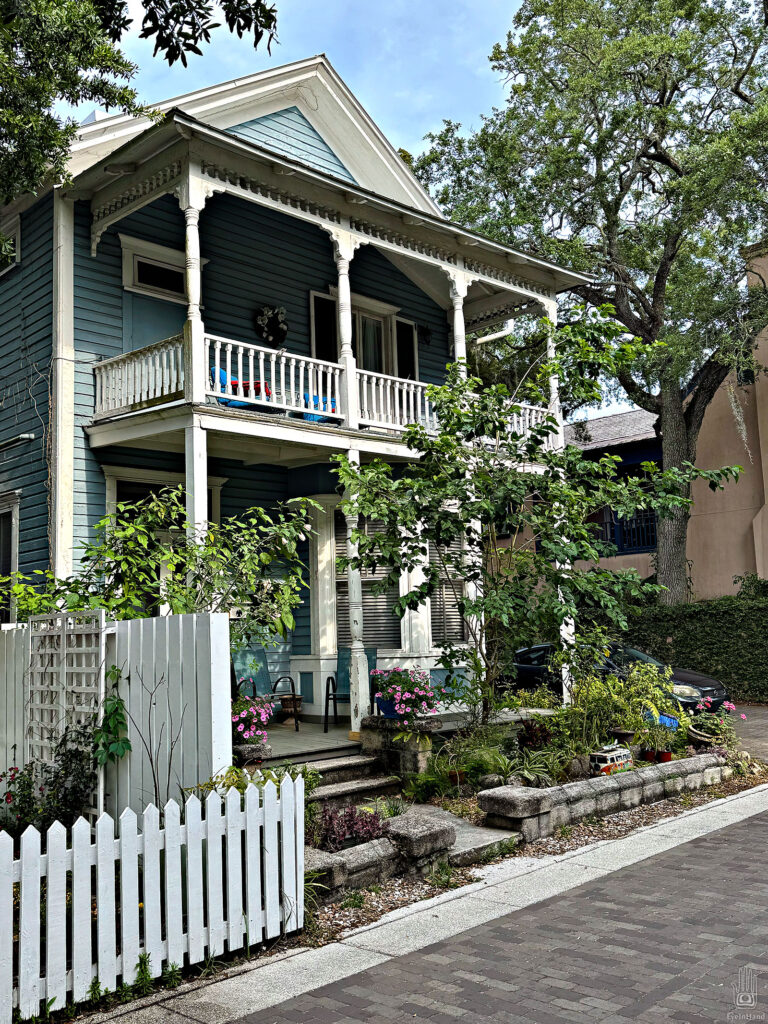
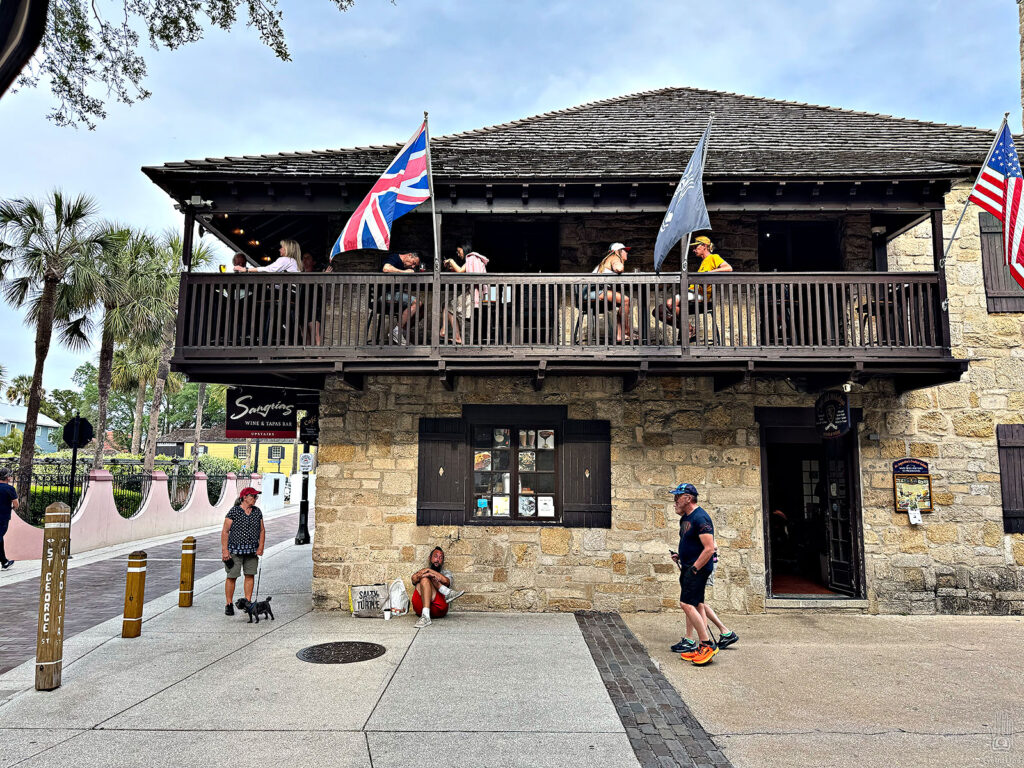

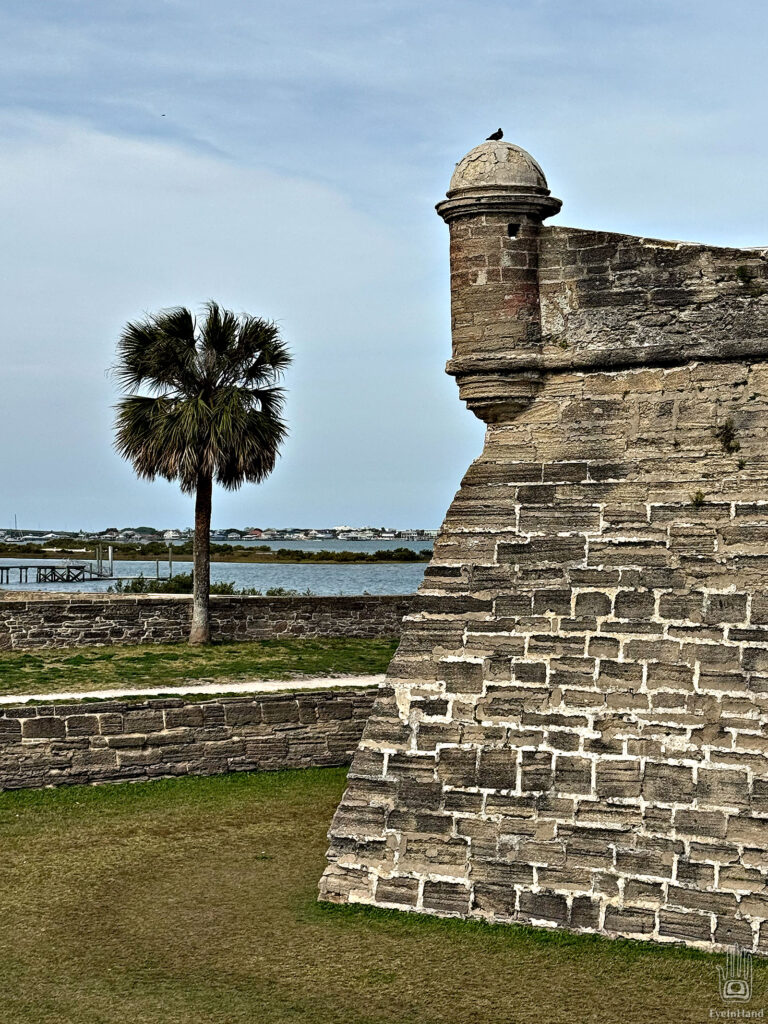
On a long narrow side street I found a fancy hat store where, on the bottom shelf at the back, was a suitable replacement chapeau for the minor monstrosity haunting me since Daytona. This improved my perception of the environs immeasurably. I forgave everything. I gained a new appreciation for my fellow flawed and complicated citizens, tipping a brim to gentlemen and ladies alike, wandering the streets until the sun set, lights came on, and it was time for dinner.

